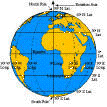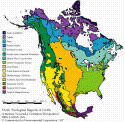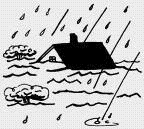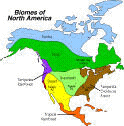
|
Location * exact location, relative location
|

|
Place * Natural features, human features
|

|
Regions * physical land features including mountains, hills, lowlands, coastal plains, plains, river valleys, salt marshes, swamps, beaches AND human characteristics including culture
|

|
Movement * settlement patterns, trade, transportation of products and goods, movement of people [settling, vacationing], movement of ideas
|

|
Relationships * People and the land. People and the ecosystem. Mining and the land. Refuges and saving animals. Regional changes over time.
|

|
Map study * outline maps, regions of the world by continents, annual precipitation, climate regions, topographic maps, water resources, distance between cities
|

|
Climate zones * Frigid (tundra) , Temperate (grasslands, broadleaf deciduous), Tropical (broadleaf evergreen, rainforests, savannas)
|

|
Land and landforms * Continents, islands (atolls, coral reefs), elevations (mountains, plateaus, hills, slopes), depressions (canyons, chasms, gorges, gulches, valleys, karsts), plane regions (pampas, plains, steppes, tundras), coastal regions and shorelines)
|

|
Vegetation regions * Forests, grasslands, deserts, swamps, marshes
|

|
Air Water * Atmosphere (precipitation; air temperature); oceans and seas, rivers; ponds; estuaries
|

|
Hemispheres * Northern, southern, eastern, western
|

|
Map reading * Map scales, symbols, abbreviations (topographic map symbols, prime meridian line, latitude, longitude, census address, population, water symbols)
|

|
MAPS * North America, Central America, South America, Europe, Asia, Africa, Australia, Antarctica
|

|
Books and resources to support the study of geography
|














